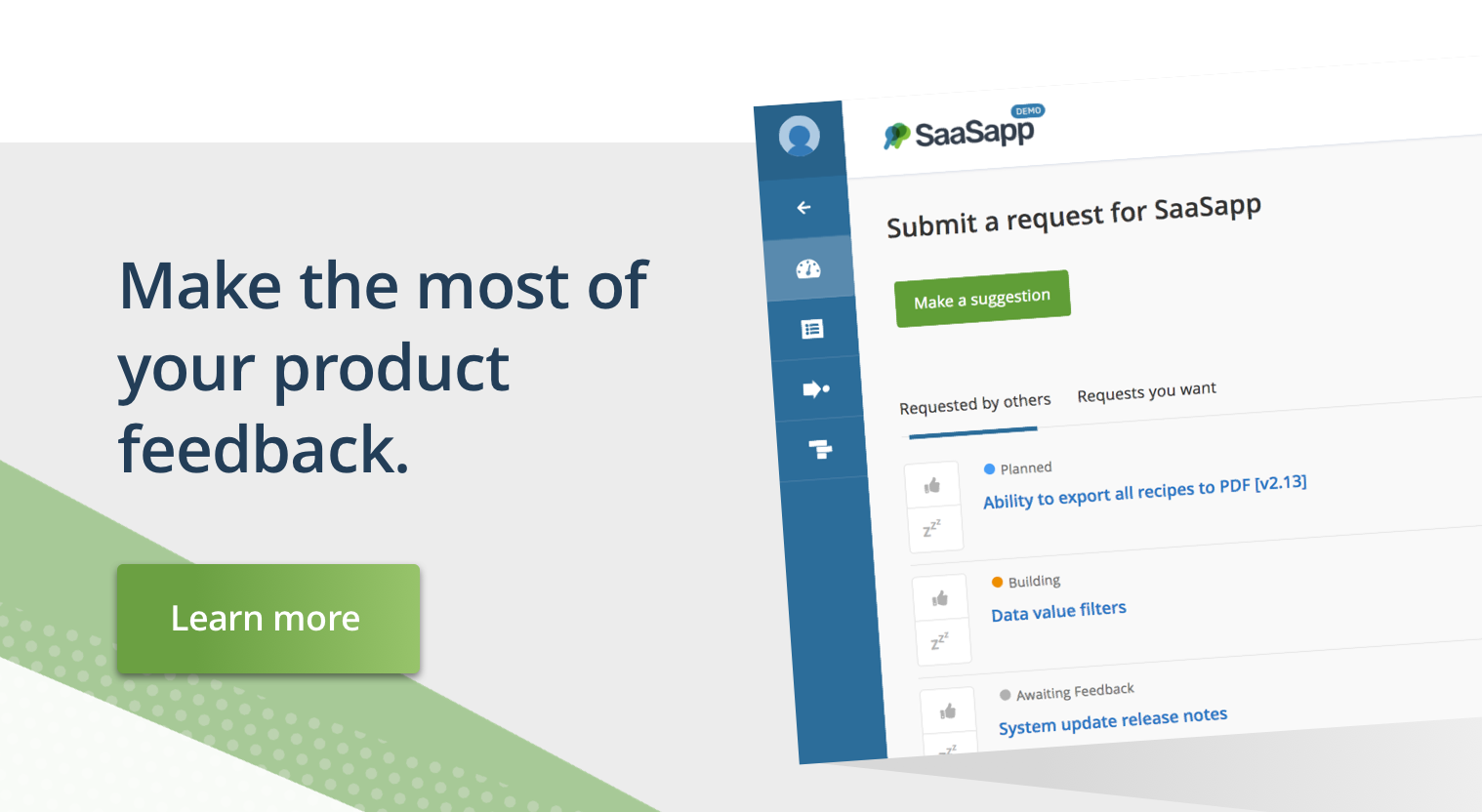If you break your leg, and then continue to walk on it, that break is going to get worse. Eventually it might get so bad that you need some serious surgery to fix it.
The best course of action when you break your leg is to fix it right away. This ends up easier, cheaper, and you get to use the leg sooner.
A lot of SaaS companies who approach us tell us about their various customer feedback ailments. The strange thing is that some of them don’t have any real sense of urgency. They’re happy to keep putting it off, burying their heads in the sand.
But, much like a broken leg, ignoring your customer feedback problem is only going to make it worse. The sooner you deal with the problem, the easier it is to solve it, and the sooner you can be making the most of the feedback you collect.
Let’s take one of the most common customer feedback problems we hear about…

You have a whole load of feedback coming in, far too much to handle, and it’s taking up all your Support team’s time. Not only that but it’s stored all over the place - in support tickets, emails, Slack conversations. There’s no possible way of using it to make product decisions.
Now let’s consider what happens if you ignore the problem.
That big pile of feedback you have? It’s only going to get bigger. It’ll spread out more. Soon you’ll have thousands of requests scattered around with no way of organizing them. The worst part is all of this feedback will be rendered useless - you’ll have no way of actually gaining any insights from it.
The longer you leave it, the worse it will get.
That’s the bad news. The good news is that with a few simple tweaks, you can make it better.
Firstly, create a centralized database of feedback. This should be somewhere that you keep every bit of feedback you receive. Ideally, it should be accessible to your customers so that they can provide feedback without taking up your Support team’s time.
Receptive does exactly this. If you’re a startup or a smaller business, then you can probably manage with a dedicated email address or a data-storage product like Airtable for now.
Do be aware, however, that as you scale you’ll need to move over to a solution like Receptive. It might be worth getting started with us right away.

Secondly, use your product strategy to inform which bits of feedback you pay attention to. Rather than haphazardly rummaging around for insights, a top-down approach is far more effective. You have to change your product backlog into a feedback library.
If, for example, your Product strategy said that the plan for the next quarter was to make UI improvements, then you could filter down to the feedback you have concerning your UI.
If you use Receptive, we take care of the filtering for you with our tagging functionality. If not, then it might require a bit of a manual work, but still nowhere near as much work as trying to manage every single request you receive.
In two simple steps you can turn a jumbled mess of feedback into something more manageable and genuinely useful to you. The sooner you put those two things into action, the sooner you can start making the most of your feedback.




